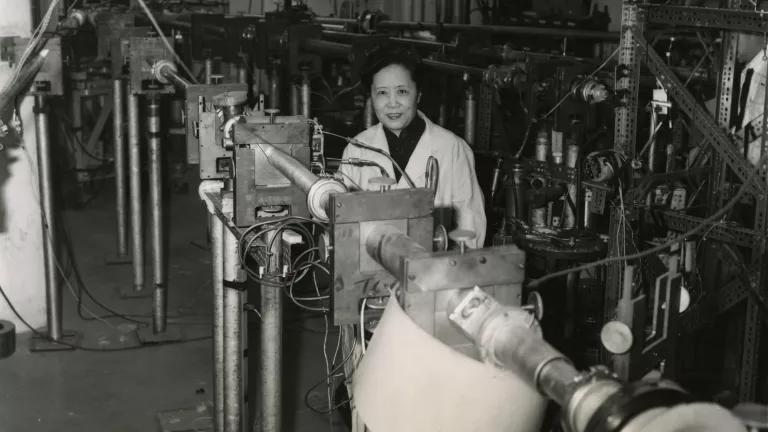Pathbreaking Woman Scientist Honored with Postage Stamp
Dr. Chien-Shiung Wu, an experimental physicist who, more than 60 years ago and in a field that is still dominated by men, made significant contributions to nuclear physics.

A courageous and pathbreaking woman in science is being recognized and honored today. Dr. Chien-Shiung Wu, an experimental physicist who, more than 60 years ago and in a field that is still dominated by men, made significant contributions to nuclear physics. She will be honored on a U.S. postage stamp that launches today, the International Day of Women and Girls in Science.
Dr. Wu’s story is one of love of learning, and the courage and persistence to succeed in a society and a professional field that, at the time, was less than welcoming.
Born in a small town in China in 1912, she went to a school started by her father, who advocated for girls’ education. She studied physics in Shanghai and decided to pursue her advanced education in the United States. She received her Ph.D. in physics in 1936 from University of California, Berkeley, and later taught physics at Princeton University and Smith College.

USPS
She moved to New York City to join the Manhattan Project team at Columbia University. She helped develop the process for separating uranium metal into the isotopes U-235 and U-238 by gaseous diffusion. She continued at Columbia after World War II ended. Her expertise in beta decay was instrumental in advancing work that was later awarded the 1957 Nobel Prize for Physics, but to two other (male) theoretical physicists, not to her.
Dr. Wu continued to make significant contributions throughout her life, and developed improved Geiger counters for measuring nuclear radiation levels. Her research helped answer key questions about human blood and sickle cell anemia. She was the first woman to serve as President of the American Physical Society, elected to that post in 1975. She was the first woman ever awarded an honorary doctorate by Princeton University. She won the prestigious Wolf Prize in Physics in 1978, and her book Beta Decay, published in 1965, is still used as standard reference for nuclear physicists. She died in 1997 in New York City.
Dr. Wu’s persistence, trail-blazing insights, and vision inspire us. She was a person dedicated to learning and advancing our scientific understanding of the world, even if it meant breaking into a male-dominated field. And she did it at a time when women, and many Asian immigrants, were systematically marginalized in society and the sciences. Thank you, Dr. Wu, for your courage. We are still learning from your example today.



